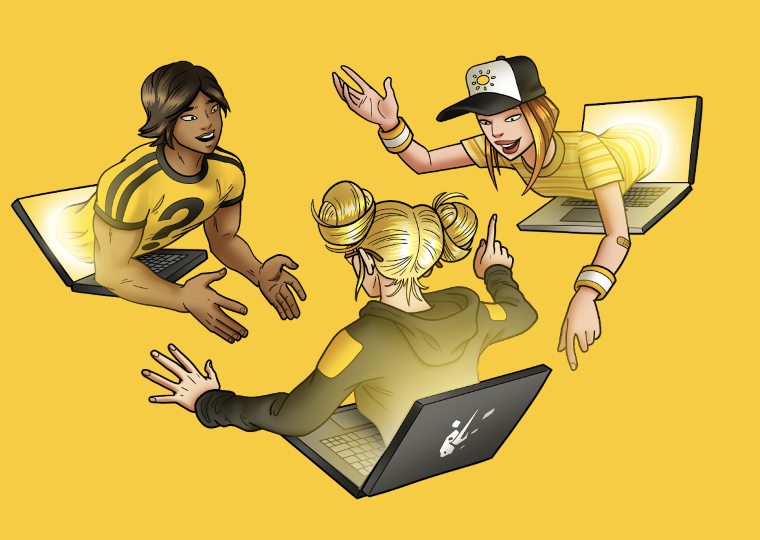

For centuries, some of the most profound learning experiences have occurred not in vast lecture halls but around intimate circles of dialogue and exchange. From Socrates engaging his students in philosophy to our ancestors debating strategies around a campfire, small group discussions have been the lifeblood of intellectual growth and human connection. Today, as education grapples with an evolving technological landscape, Breakout Learning is rediscovering—and revolutionizing—this timeless learning format.
The Historical Roots of Small Group Learning
Small group discussions have long been a powerful vehicle for knowledge sharing and critical thought. These environments foster engagement by encouraging individuals to wrestle with concepts, defend their viewpoints, and absorb new perspectives. Socratic dialogue epitomized this, where a teacher would challenge students to think critically and articulate their reasoning in a shared discourse.
However, modern education has largely shifted away from these intimate exchanges. The industrial model of schooling, focused on efficiency and scalability, introduced a preference for one-way lectures and rigid structures of learning. The question isn’t whether small group discussions hold value, but why they’ve been largely absent in many educational settings—and how we can bring them back.
Engagement and Efficacy in Modern Education
At the heart of Breakout Learning’s mission is the recognition that learning thrives best in environments where students are truly engaged. Large lecture-based formats often leave students passive, and traditional homework assignments remain highly individualistic, requiring students to work in isolation. Disinterest builds, motivation wanes, and learning outcomes stagnate.
Breakout addresses this head-on with a bold approach to transform education into a collaborative experience. Small groups of ~5 students engage in structured discussions where accountability and participation are not optional but integral. These groups foster a sense of shared purpose, ensuring that each participant has skin in the game as they collectively tackle concepts and wrestle with ideas.
According to research, small group discussions achieve the highest levels of engagement and efficacy. The format allows students to articulate their thoughts, respond to peers, and rethink their positions in dynamic exchanges.
Enter AI Moderation and Scale
While historically impactful, small group discussions are not without their flaws—imbalanced participation, dominant voices, free riders, and potential biases can hinder their effectiveness. What makes Breakout’s approach groundbreaking is its integration of AI to foster moderation, scale, and actionable insights.
The AI sits invisibly within each discussion, analyzing content in real-time. It ensures balanced participation so that no single voice overshadows others while giving quieter or less confident participants a chance to shine. It actively mitigates biases, encourages the inclusion of diverse perspectives, and monitors the overall depth of understanding within the group.
Where professors previously had no visibility into what transpired within group dynamics, Breakout’s AI provides detailed summaries. These actionable insights highlight key moments of disagreement, areas successfully mastered, and concepts still misunderstood. Now, professors enter the classroom informed and ready to engage their students at a higher level.
We can think of this shift in the professor’s role to that of a conductor orchestrating a symphony rather than a solo performer on stage. Professors become facilitators, focusing on extending classroom dialogue and exploration rather than reiterating basic concepts.
A Model for the Future
Education isn’t just about absorbing information—it’s an experience deeply entrenched in connection, debate, and discovery. Breakout’s small group discussions reignite this ethos in a way that fits today’s challenges and potentials. It’s learning as a team sport, pushing students to think critically, articulate clearly, and collaborate effectively—all skills vital for the workforce of tomorrow. By replacing cold, impersonal assignments like textbook reading and essay writing with vibrant, structured discussions, Breakout’s platform ensures that learning feels human again.
But more than that, it’s a reminder of what education is meant to be. “Learning is a communal experience,” says Ramit Varma, CEO of Breakout Learning. “We want to be going on that learning journey together.”
Today, students in classrooms anywhere in the world can participate in these rich discussions, their contributions monitored and mapped to larger learning objectives by AI. At Breakout, we’re transforming classrooms by blending the best of the past with the possibilities of the future. We're redefining human and digital collaboration, unlocking new opportunities for learning and connection.
The question is no longer, “Why small group discussions?” but rather, “Why not?” The future of learning has always been within reach— and Breakout Learning is paving the way forward.
Up next


Inclusive Learning Starts with Standards That Build Trust
Education has long been shaped by systems designed for efficiency, but this has often come at the cost of equity and engagement. At Breakout Learning, we see an opportunity to reimagine this narrative. By harnessing the power of AI, we strive to create...

Authentic Assessment Starts with Real Conversations (and AI)
The evolving field of education demands tools and techniques that align with modern learners' needs. Traditional methods of evaluation—think multiple-choice exams and essays—often fail to capture the depth and complexity of true learning. They assess...

